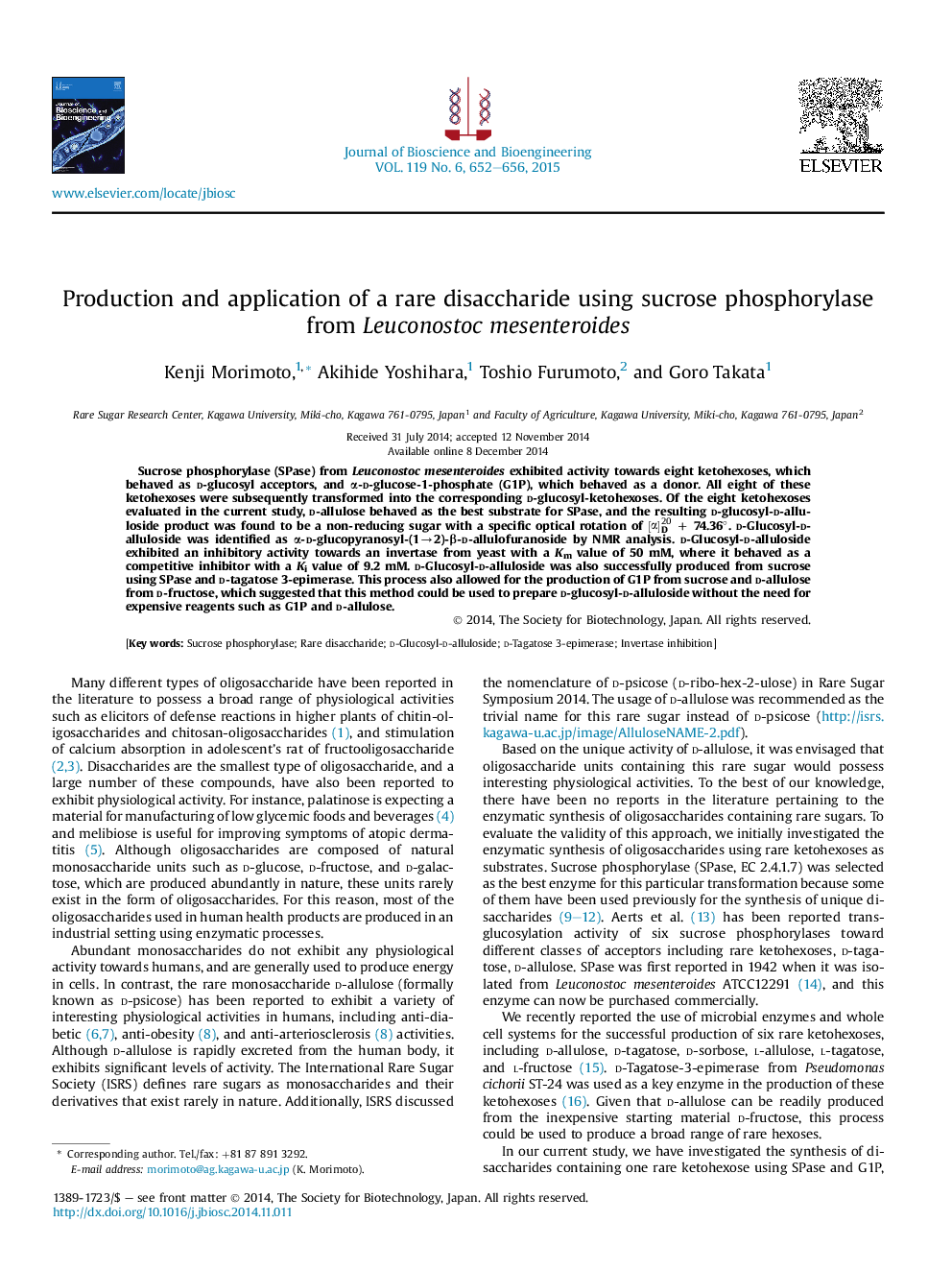| کد مقاله | کد نشریه | سال انتشار | مقاله انگلیسی | نسخه تمام متن |
|---|---|---|---|---|
| 20326 | 43169 | 2015 | 5 صفحه PDF | دانلود رایگان |

Sucrose phosphorylase (SPase) from Leuconostoc mesenteroides exhibited activity towards eight ketohexoses, which behaved as d-glucosyl acceptors, and α-d-glucose-1-phosphate (G1P), which behaved as a donor. All eight of these ketohexoses were subsequently transformed into the corresponding d-glucosyl-ketohexoses. Of the eight ketohexoses evaluated in the current study, d-allulose behaved as the best substrate for SPase, and the resulting d-glucosyl-d-alluloside product was found to be a non-reducing sugar with a specific optical rotation of [α]D20 + 74.36°. d-Glucosyl-d-alluloside was identified as α-d-glucopyranosyl-(1→2)-β-d-allulofuranoside by NMR analysis. d-Glucosyl-d-alluloside exhibited an inhibitory activity towards an invertase from yeast with a Km value of 50 mM, where it behaved as a competitive inhibitor with a Ki value of 9.2 mM. d-Glucosyl-d-alluloside was also successfully produced from sucrose using SPase and d-tagatose 3-epimerase. This process also allowed for the production of G1P from sucrose and d-allulose from d-fructose, which suggested that this method could be used to prepare d-glucosyl-d-alluloside without the need for expensive reagents such as G1P and d-allulose.
Journal: Journal of Bioscience and Bioengineering - Volume 119, Issue 6, June 2015, Pages 652–656